Eleanor Hughes maps out a route to take in Christchurch’s attractions.
During a recent trip to the South Island to walk the West Coast’s Paparoa Great Walk, I travelled to Christchurch. Having never been there before, I planned a day in the city. I circled what I wanted to see on a map, and devised a route to take in as many of the city’s highlights as I could.
I always feel more connected to a place once I’ve walked around it, so I parked at the Christchurch Botanic Gardens carpark, located in North Hagley Park (there are motorhome parks here too), and making your way out to the corner of Armagh Street and Park Terrace.
Living in Auckland, the first thing I noticed was how quiet and flat it was.
Canterbury Museum
My first stop was Canterbury Museum on Rolleston Avenue, which Park Street becomes. You’ll pass by the very English-looking Christ’s College, the first of its stone buildings – ‘The Big School’, having been built in 1863. The museum is next door and it too is a grand, stone, two-storey building. Constructed in 1870, with ongoing additions, it’s apparently the oldest purpose-built museum building still in use in New Zealand. Free to visit and opening at 9am, I spent an hour wandering from moa and Māori history, to the settling of Christchurch and a mock-Christchurch street housing late 19th Century businesses. There was an interesting Antarctica display on past explorations with several vehicles used on these including Sir Edmund Hillary’s Scott Base tractor. Bluff’s Fred and Myrtle’s Paua Shell House’s front room has also been replicated; over 1000 paua shells are displayed on its walls (for more information on this and other quirky places in New Zealand, check out Quirky NZ in our Books page). Other exhibits at the museum include the story of speedway rider, Ivan Mauger, a bird hall, Asian arts, geology and more.
Back on Rolleston Avenue, I rotated my map so that the museum was showing behind me (I’m directionally challenged!) and retraced my steps to take a right up Armagh Street. Tram tracks ran along it with a number of Victorian villas intermingled with newly-built apartments, all half hidden by Genko trees turned golden yellow in the early autumn weather. Further along, a multi-storey block was still being completed, a couple of lots, probably where buildings had been earthquake-destroyed, were temporary carparks. Quake City was on the corner with Durham Street North.
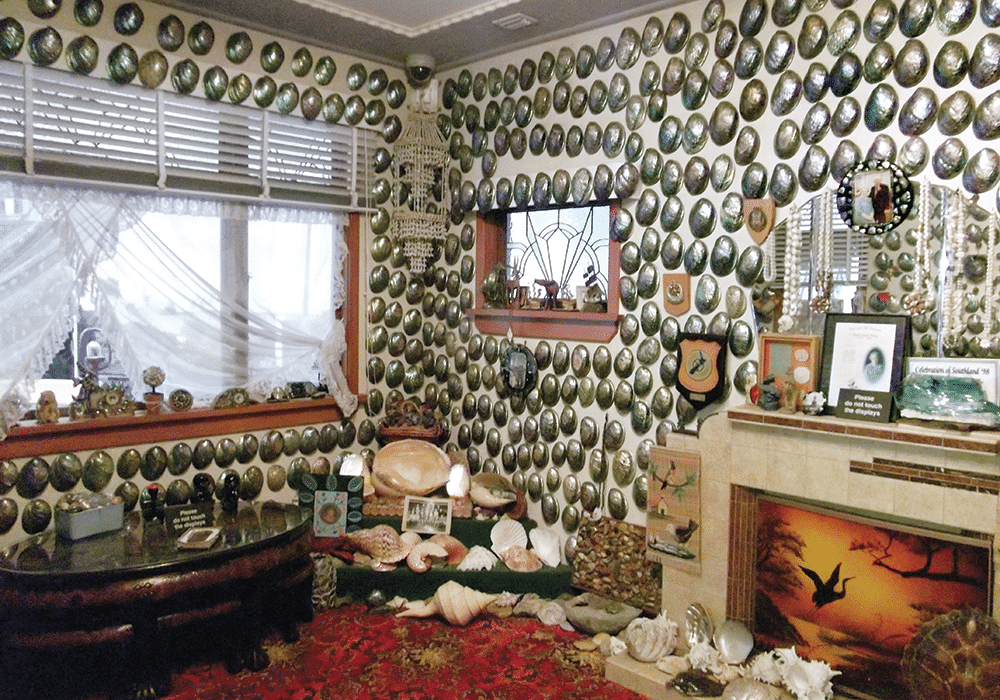
Quake City
Another hour was easily spent at Quake City discovering the moving story of the Canterbury earthquakes. Viewing a timeline, I was surprised to learn how many earthquakes Canterbury has had since the 1800s. Most of the museum is dedicated to the events of the 22nd February 2011 quake, and along with many photos, the day’s news broadcasts play and there are recordings of a number of people telling of their experience. Details of the emergency response, volunteer helpers, liquefaction and parts of damaged structures such as the Christchurch Cathedral spire are also displayed.
Oxford Terrace
Slightly further up Armagh Street, I took a right into Oxford Terrace where on the corner the new Convention Centre is being built, the grey and white herringbone pattern on its exterior separated by a line of windows that reminded me of a wave. The cobbled promenade that followed the peaceful, tree-lined Avon River looked recently laid, some of the plantings not long dug in. Alongside the Convention Centre more buildings were going up behind corrugated iron or wooden boardings. On the other side of the river, 5-storeyed, glass-fronted buildings look shiny and new. They’re possibly the highest buildings I’ve seen in the city. In contrast, a perhaps early 1900s, red-bricked, two-storey structure is steel braced, with reconstruction and earthquake-proofing work still being carried out.
Just before the intersection of Worcester Boulevard I spotted the Kate Sheppard National Memorial, the Christchurch-born leader of New Zealand’s women’s suffrage campaign. A plaque details the history of the campaign with the sculpture featuring Kate Sheppard and five other women prominent in the fight for equal rights: Helen Nicol, who pioneered the women’s franchise campaign in Dunedin; Ada Wells, who campaigned for equal education opportunities for women; Harriet Morison, Tailoresses’ Union’s vice-president and advocate for working women; Meri Te Tai Mangakahia, who requested the vote for women from the Kotahitanga Māori Parliament; and Amey Daldy, a foundation member of the Auckland Women’s Christian Temperance Union and president of the Auckland Franchise League.
A number of boards are positioned along the riverside informing on heritage buildings or points of note and several artworks can be seen also, part of the SCAPE Public Art installations dotted around the city. I particularly liked Antony Gormley’s piece called ‘Stay’, a sculpture of a human figure standing in the Avon. Near Hereford Street Bridge, a waterwheel sits on Avon’s tiny Mill Island, site of an1859 flour mill. Further on the War Memorial on Cashel Street, a colossal white arch looking strong and majestic, marking the head of The Bridge of Remembrance, which crosses the river, was erected in 1923 to honour WWI soldiers.
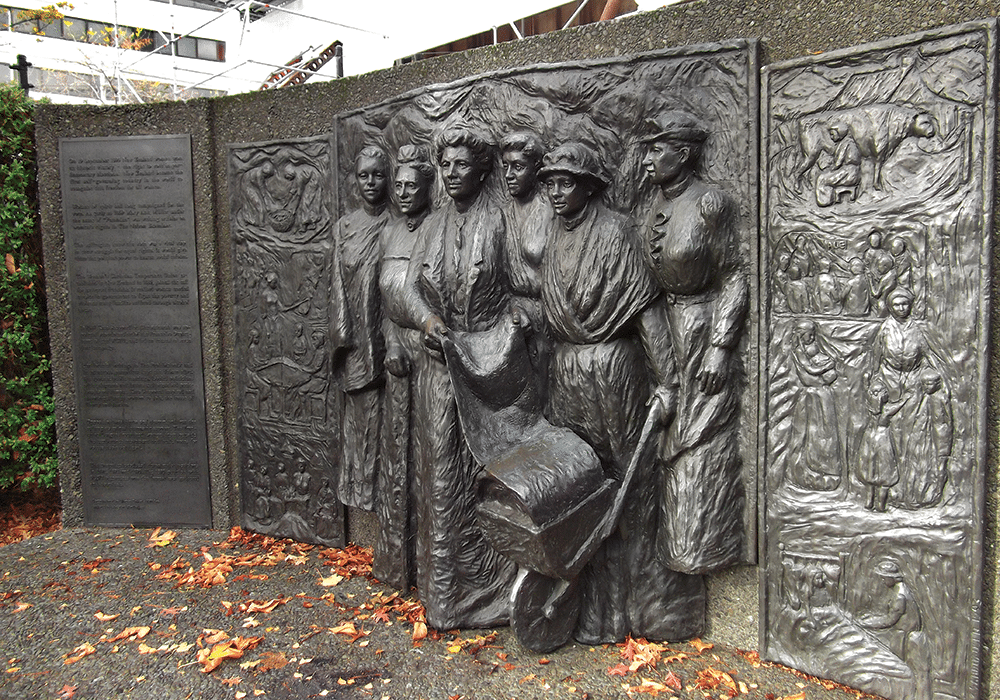
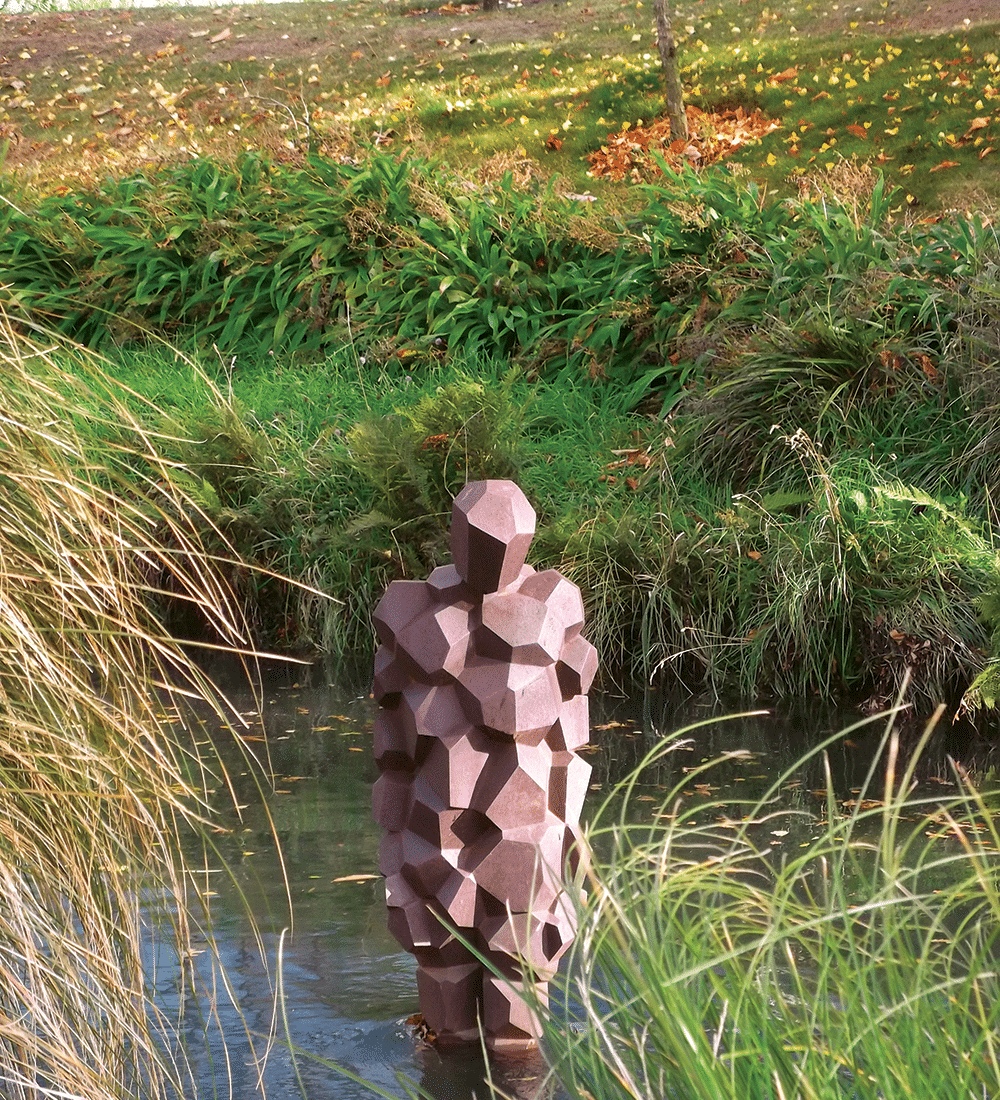
Cathedral Square
Wandering down Cashel Street away from the river took me along a pedestrian mall and retail precinct, the modern glass-fronted stores looking newly constructed, including Ballantynes Department Store. Displaying upmarket shoes and homeware in its windows, this building has stood there in some form, firstly known as The Dunstable House, since 1854. The streetscape would certainly have looked different in those days!
Turning left into Colombo Street I entered Cathedral Square. With the Cathedral rebuild still taking place it’s not particularly picturesque, with cranes, scaffolding, and boardings keeping the Cathedral off-limits. It echoes to the sound of heavy machinery, clanging and banging. There are numerous panels to read on the boardings which cover the history of Christchurch and also the Cathedral, from its foundation in 1864 to subsequent additions. Photographs show buildings that stood around the square before the earthquake. Throughout the city numerous murals decorate the sides of buildings which draws the eye away from ravaged structures. Just past the Christchurch Central Library, opened in October 2018 and opposite the cathedral, on Cathedral Square’s Worcester Street exit is one depicting Antarctica, with icebergs and penguins.
New Regent Street
A left down Press Lane, a narrow walkway at the beginning of Worcester Street, took me past a mural commemorating the lane’s history, named so as it commenced outside The Press newspaper’s offices which were demolished after the earthquake. I emerged opposite the red-bricked, ornate Isaac Theatre Royal, opened in 1908, on Gloucester Street. It’s nice to see a few heritage buildings still standing amongst the sparkling new, or yet to be built on bare lots. A right and then a left brought me to New Regent Street, a pretty pedestrian thoroughfare of pastel, heritage-listed, terraced buildings built in 1932. It has a number of cafés, bars and coffee spots, as well as Rollikin Gelato for icecream. The street is a great spot for lunch.
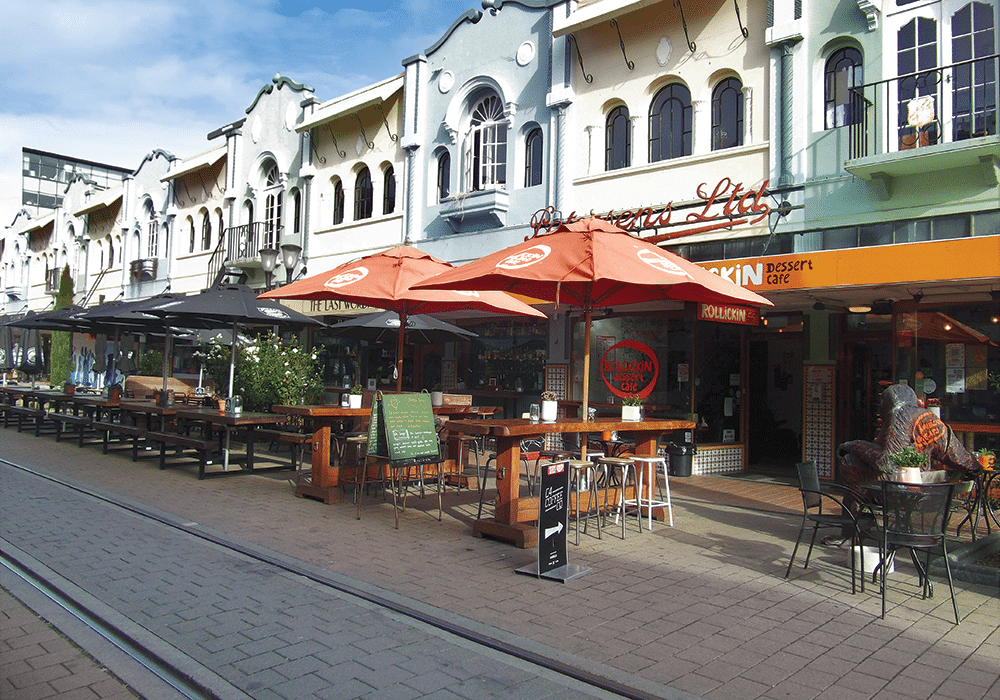
185 Empty Chairs
At the end of New Regent Street, over Armagh Street and the river, I spotted the roof of the Thomas Edmonds Band Rotunda, which was gifted to the city in 1929 by Thomas Edmonds, publisher of the Edmonds cookbook. It has apparently only just been resurrected having sat on the ground since the earthquake. I glanced left down Armagh Street and noticed boardings surrounding a lot, twisted reinforcing steel jutting from broken concrete pillars within. I wandered down and peered through the ‘windows’ in the boarding. Water made a lake in the crumbled foundations. It was sobering.
Retracing my steps I reached Manchester Street where opposite lay the Margaret Mahy Family Playground. Taking up the entire block from Armagh Street to Kilmore Street and between Manchester and Madras Streets, it was constructed to encourage families back into the city after the quake. The swings, slides, flying fox and other adventurous structures stood empty on a rather chilly Monday. A bit out of the way, the 185 Empty Chairs installation is past the playground and another block on at the corner of Kilmore and Manchester Streets. The empty white chairs, all different shapes and sizes are a poignant memorial to the 185 victims of the 2011 earthquake. The glimpse of them, vacant on a grassed site where once the St Luke’s Anglican church stood, a few mature trees still remaining, was moving and the sight remained with me for a while afterwards.
Cardboard Transitional Cathedral
Walking along the back of the playground, on Madras Street, I crossed over Armagh and reached Latimer Square, a quiet, grassed, tree-bordered park. Straight on brought me to Hereford Street, where across the road the Cardboard Transitional Cathedral stands. The triangular stained glass window taking up almost all of the A-frame cathedral’s frontage is made up of triangles and is extremely colourful. Seating nearly 700, it’s hard to believe the ceiling is constructed of 98 cardboard tubes, 60cm in diameter and 20m in length. Tables too are constructed from the tubes. A polycarbonate roof protects them, concrete floor, local wood and steel – four shipping containers run along two walls, have also been utilised in the building built in 2013 to last at least 50 years. The cathedral was designed by Shigeru Ban, architect of a cardboard church in Kobe, Japan which replaced one destroyed by fire in the Kobe earthquake.
Taking a left out of the cathedral, I continued up to Manchester Street passing two and three-storeyed, one and two-bedroomed apartments built since the earthquake to encourage around 10,000 people to move into the city. Perhaps they are still to move in, I’d seen few people in my wanderings throughout the day. A left along Manchester Street, where grassed sites and car parking lots have replaced buildings that stood there prior to the quake, took me to Lichfield Street which I turned right into. Rubble lay next to the façade of a demolished building; containers stacked six-high on the pavement still supported the one next door: I had to walk on the road to pass by; further along a vibrant mural of native birds decorates the new Justice precinct. Nearly opposite, a spectacular 3D mural featuring Victorian buildings and businesses covers the back of Riverside Market.
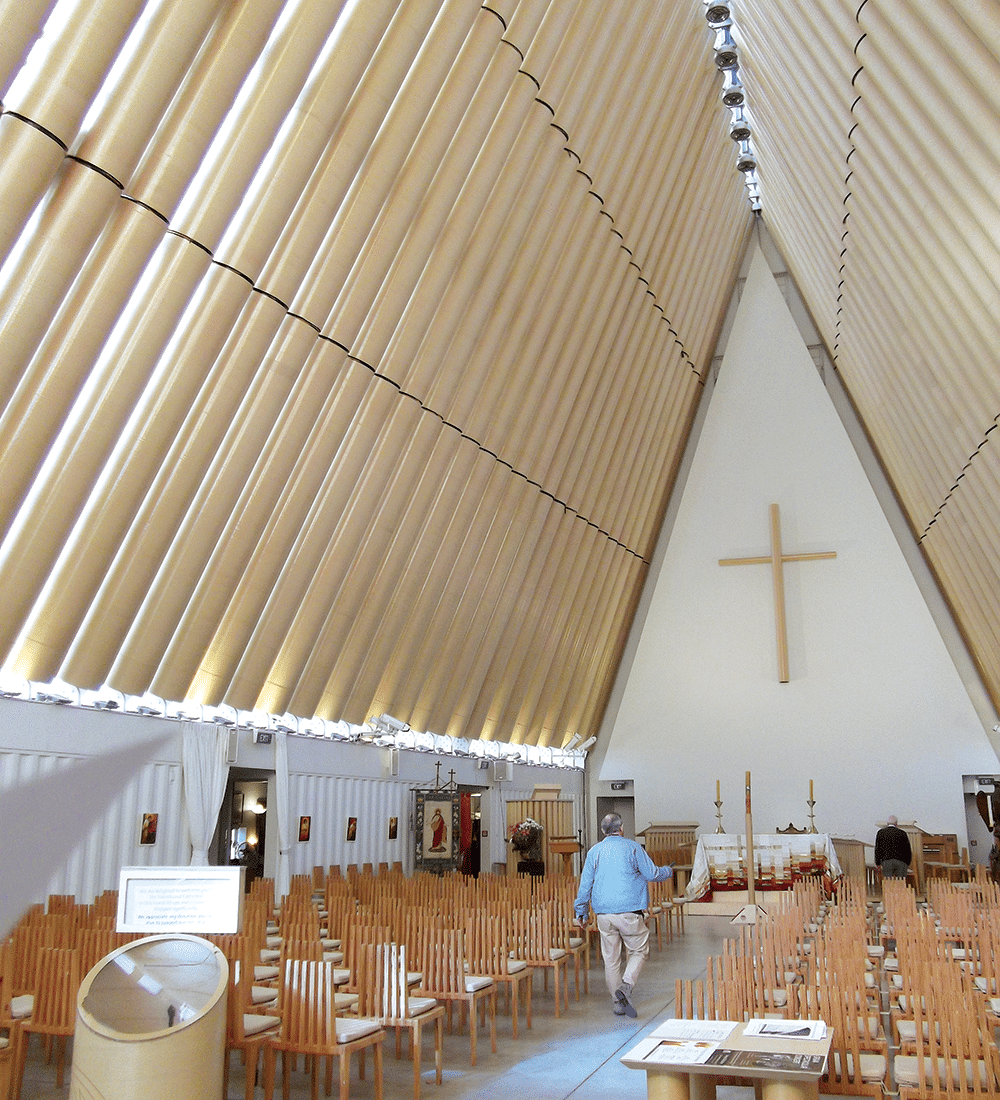
Riverside Market
Several laneways of small retailers lead to the indoor market which houses restaurants, cafés and bars plus small, local businesses selling a huge variety of food products. I spent quite a while browsing stalls displaying baked goods, sauces, salami, salts, cheeses and relishes, to name a few. Canterbury Brewers Collective sells craft beers, or there are spirits at The Spirits Workshop if beverages are required!
Canterbury Earthquake Memorial
Exiting onto Oxford Terrace I veered left and followed it around trying to locate the Canterbury Earthquake Memorial. I missed it the first time and found the serene memorial below street level, on the riverside. A white marble wall is engraved with the names of all the earthquake victims. Messages and stories left by relatives are very moving.
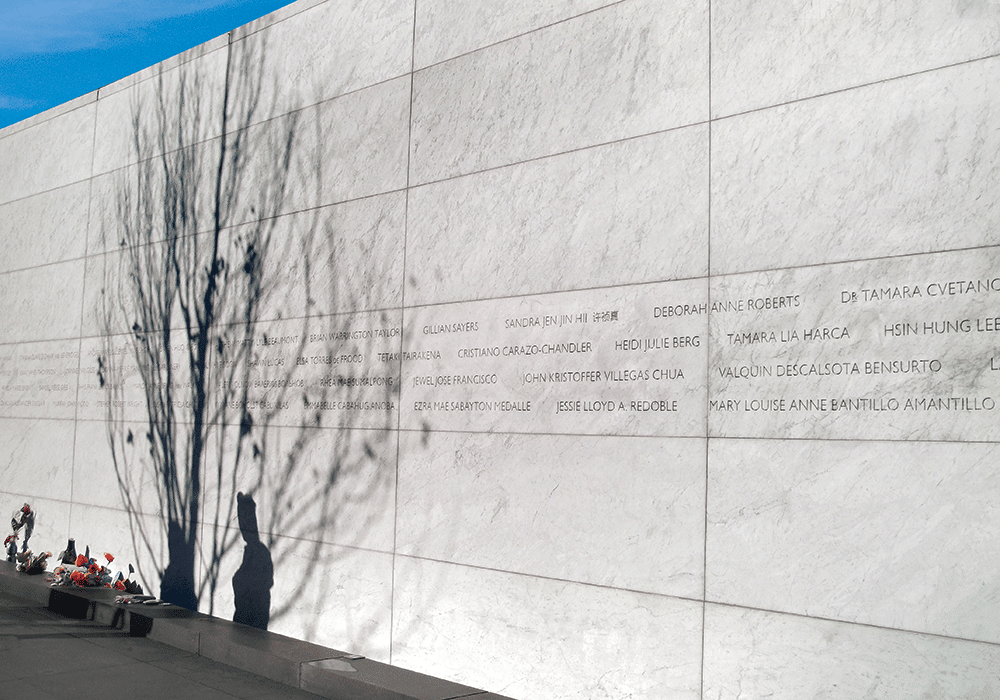
Antigua Boatsheds
At the end of the memorial, on Montreal Street, cross over and turn right, then left into Cambridge Terrace. Up on the left hand side are the white and green-striped Antigua Boatsheds, situated on the edge of the Avon River. Boats have been available to hire from the Category 1 Heritage NZ listed building since it was built in 1882. Inside one of the sheds, Punting in the Park display boaters and blazers and offer punts along the river, or a few sheds along, kayaks are available. Boat Shed Café is at its far end, looking out over the water.
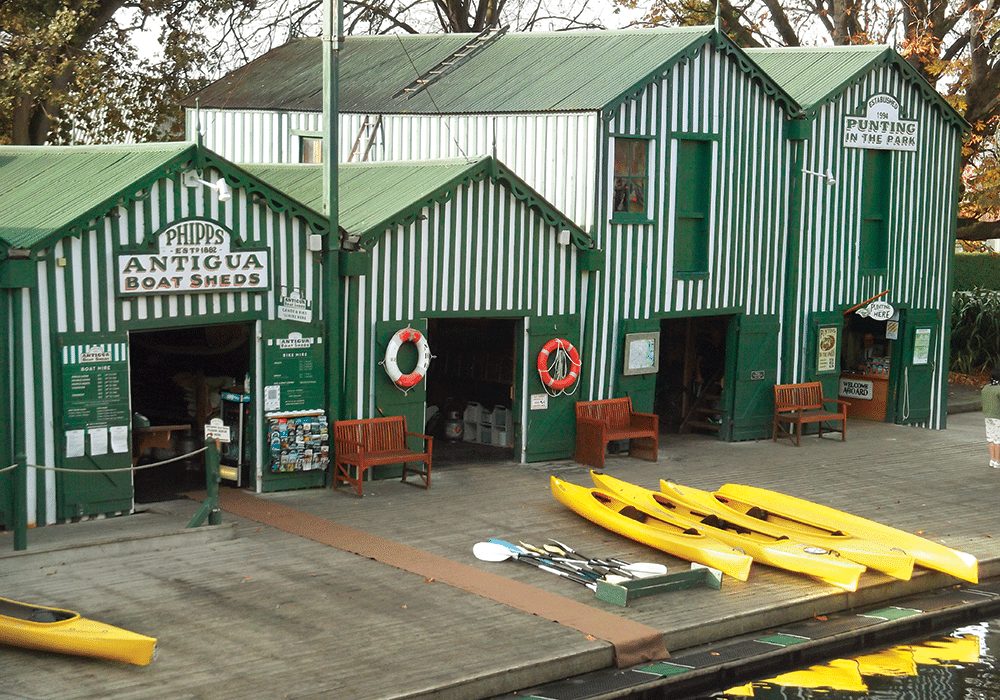
Botanic Garden
Following Cambridge Terrace around to the right, brought me to the gates of the Botanic Garden. Free to stroll, it was founded in 1863 and covers 21 hectares, hemmed by the Avon River. Featuring plants from around the world, I wandered for two hours amongst a New Zealand bush walk, rock, water, azalea and magnolia, and rose gardens and more. Conservatories house a fernery where ‘moa’ lurk, carnivorous plants, desert cacti and rainforest while Gilpin House was perfumed by orchids. The Visitor Centre showcased the story of Christchurch and Canterbury through plants and people. The café attached to the visitor centre, with its sweet treats, was very tempting to rest weary legs and with indoor or outdoor seating it’s a perfect place to end a full day. A bridge crossing the Avon leading to the Botanic Garden carpark is not too far away.
I discovered Christchurch’s history, the earthquake a big part of it from which the city is still recovering. Christchurch central is being reinvented but still encompasses its heritage. It felt though that it lacked people… maybe it was because of the weather.
More Information
- There are a number of camping grounds, an NZMCA park, and park over properties throughout Christchurch. See: nzmca.org.nz
- For information on the Botanic Gardens: ccc.govt.nz/christchurch-botanic-gardens
- Canterbury Museum and Quake City: canterburymuseum.com
- Riverside Market: riverside.nz
- New Regent Street: newregentstreet.co.nz
Looking for motorhomes or caravans for sale in NZ? Browse our latest listings here.






